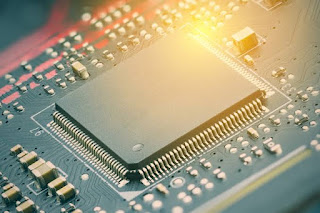What is a CPU?
Despite the huge emphasis put on CPU technology and performance, it is ultimately a very fast calculator. It fetches data from memory, and then performs some kind of arithmetic (add, multiply) or logical (and, or, not) operation on that data. The more expensive/complex the CPU, the more data it can process, the faster your computer.
A CPU itself is not a personal computer, however — a whole framework of other silicon chips is required for that. There must be memory to hold the data, an audio chip to decode and amplify your music, a graphics processor to draw pictures on your monitor, and hundreds of smaller components that all have a very important task.
What is an SoC?
An SoC, or system-on-a-chip to give its full name, integrates almost all of these components into a single silicon chip. Along with a CPU, an SoC usually contains a GPU (a graphics processor), memory, USB controller, power management circuits, and wireless radios (WiFi, 3G, 4G LTE, and so on). Whereas a CPU cannot function without dozens of other chips, it’s possible to build complete computers with just a single SoC.
The difference between an SoC and CPU
The number one advantage of an SoC is its size: An SoC is only a little bit larger than a CPU, and yet it contains a lot more functionality. If you use a CPU, it’s very hard to make a computer that’s smaller than 10cm (4 inches) squared, purely because of the number of individual chips that you need to squeeze in. Using SoCs, we can put complete computers in smartphones and tablets, and still have plenty of space for batteries.
Due to its very high level of integration and much shorter wiring, an SoC also uses considerably less power — again, this is a big bonus when it comes to mobile computing. Cutting down on the number of physical chips means that it’s much cheaper to build a computer using an SoC, too.
